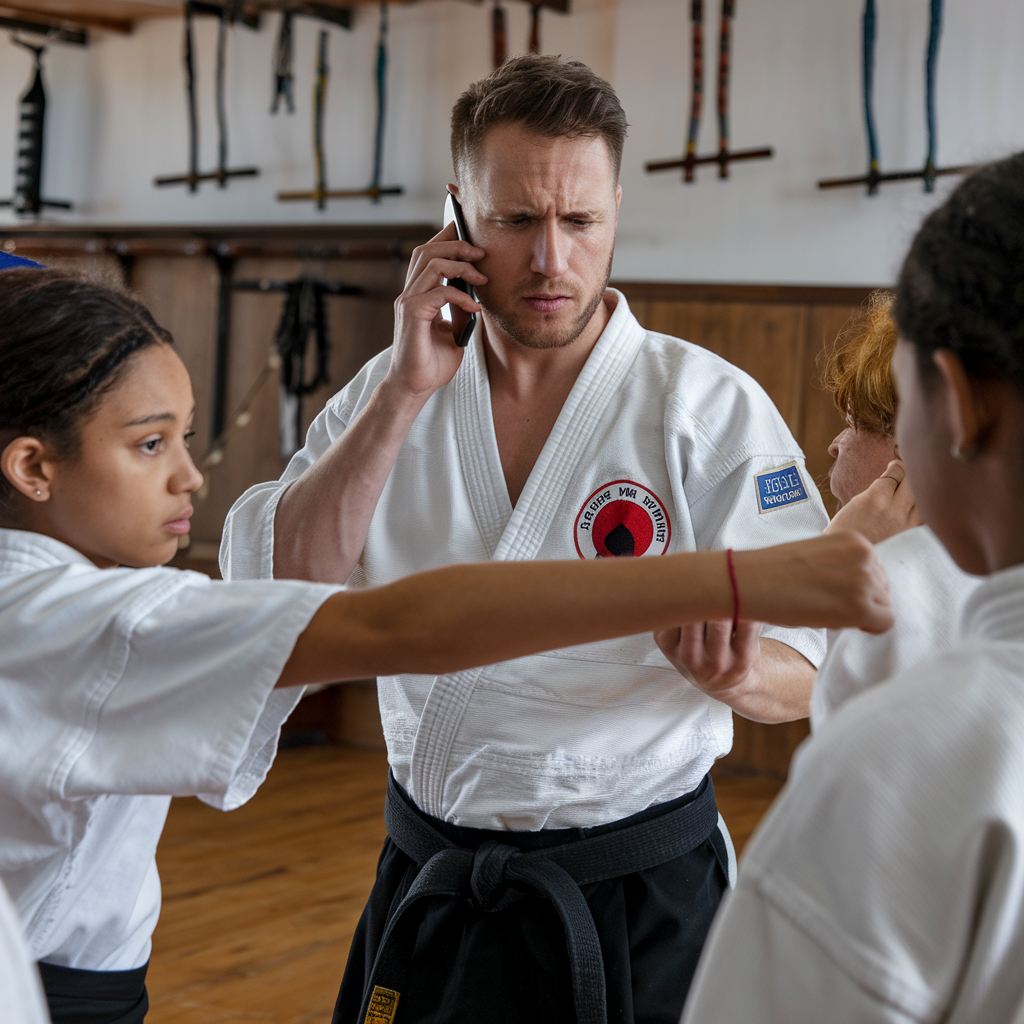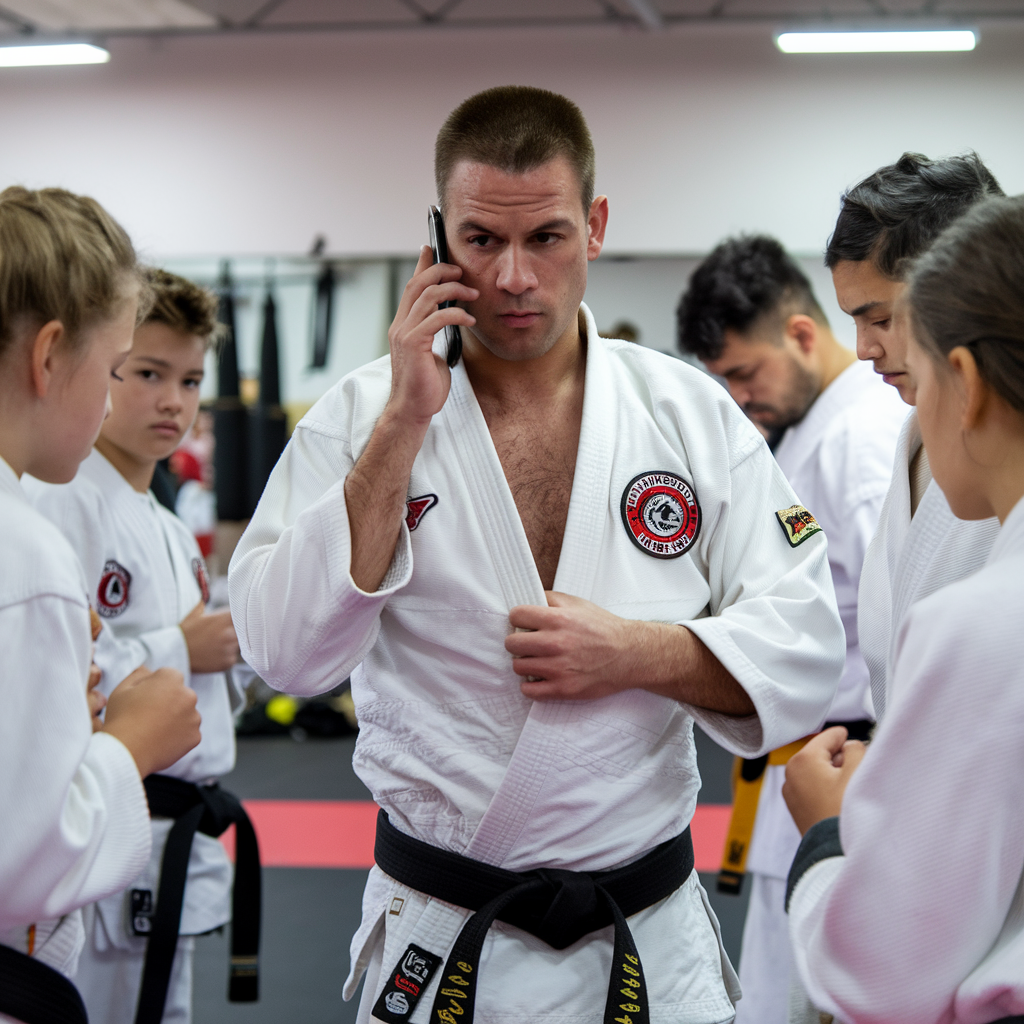From the Mat to the Office: Applying Martial Arts Principles to Everyday Life

When most people think of martial arts, they picture fast kicks, powerful punches, and intense training. However, martial arts go far beyond physical techniques—they teach values and principles that can be applied in every area of life, including the workplace. From discipline and focus to resilience and leadership, the lessons learned on the mat translate seamlessly into professional environments.
Whether you practice karate, Brazilian jiu-jitsu, Muay Thai, or any other martial art, the principles you develop can improve how you approach challenges, manage stress, and interact with others. In this article, we’ll explore how martial arts philosophy and training can enhance your performance and mindset in the office and beyond.
1. Discipline: The Key to Consistent Success
One of the most fundamental principles in martial arts is discipline. Martial artists must adhere to strict training regimens, repeat techniques hundreds of times, and follow a structured approach to learning and improvement. This same discipline is crucial for success in the workplace.
Building Productive Habits
Just as martial arts require consistent practice to master techniques, professional success depends on building productive habits. Whether it’s meeting deadlines, maintaining focus during long projects, or consistently improving your skills, discipline allows you to achieve long-term goals.
Example:
Consider a martial artist training for a belt promotion. They must show up regularly, push through challenging sessions, and refine their techniques. In the office, this translates to meeting goals through consistent effort, whether that means preparing for a major presentation or developing a new skill.
Practical Application:
- Set clear, attainable goals for your work.
- Create routines to stay organized and productive.
- Approach each task with the same dedication you bring to training.
2. Focus: Eliminating Distractions for Maximum Efficiency
In martial arts, losing focus can mean getting hit—or worse, losing a match. This heightened need for awareness and concentration carries over to professional environments where distractions can derail productivity and quality.
Maintaining Mental Clarity
During martial arts training, practitioners are taught to stay present and focused, whether they are practicing forms (katas) or engaging in live sparring. This ability to stay mentally clear and calm under pressure is invaluable in the office, where multitasking and constant interruptions can reduce efficiency.
Example:
A martial artist must focus entirely on their opponent to anticipate attacks and counter effectively. Similarly, in the office, staying focused on one task at a time leads to better decision-making and higher-quality work.
Practical Application:
- Practice mindfulness to increase focus and clarity.
- Limit multitasking—dedicate specific time blocks to individual tasks.
- Treat each project with the same attention to detail as a martial arts drill.
3. Resilience: Bouncing Back from Setbacks
One of the most valuable lessons martial arts teach is how to handle failure. Every martial artist experiences defeat—whether it’s losing a match or struggling to learn a new technique. Resilience is the ability to bounce back from setbacks stronger than before.
Learning from Failure
In martial arts, mistakes are part of the learning process. Whether it’s getting submitted in Brazilian jiu-jitsu or missing a combination in kickboxing, every failure presents an opportunity to grow. This mindset is equally vital in professional settings where setbacks are inevitable.
Example:
If a project fails or a mistake is made in the office, a resilient professional doesn’t dwell on the error—they analyze what went wrong, learn from it, and adapt. Martial arts teach you to accept failure as a stepping stone to improvement.
Practical Application:
- Embrace failure as an opportunity for growth.
- Reflect on mistakes and adjust your approach.
- Cultivate mental toughness by maintaining a positive attitude during difficult times.
4. Adaptability: Navigating Change with Confidence

In martial arts, no two opponents are the same. Fighters must constantly adapt their techniques to match their opponent’s style and strategy. Similarly, in today’s fast-paced work environment, the ability to adapt is a crucial skill.
Staying Flexible
A rigid mindset leads to failure—both in martial arts and in the workplace. Successful martial artists remain open to new strategies and techniques. In the office, this adaptability helps professionals respond to unexpected challenges and changing circumstances.
Example:
Imagine a martial artist who only knows one type of defense. If their opponent counters that defense, they must adapt or lose the match. Likewise, in business, an adaptable professional is better equipped to handle changes like shifting deadlines, new technologies, or restructuring.
Practical Application:
- Embrace change as an opportunity rather than a threat.
- Be willing to learn new skills and approaches.
- Stay open-minded and flexible when faced with new challenges.
5. Leadership: Inspiring and Supporting Others
Martial arts are not just about individual achievement—they also emphasize responsibility, mentorship, and community. Many experienced martial artists take on leadership roles, helping others grow and succeed. These leadership skills directly apply to professional settings.
Leading by Example
Great martial arts instructors inspire their students through their work ethic, humility, and dedication. Effective workplace leaders do the same by setting a positive example and fostering a collaborative environment.
Example:
A black belt might guide a beginner through their first sparring session, offering encouragement and constructive feedback. In the office, a good leader supports team members, helps them navigate challenges, and encourages personal and professional growth.
Practical Application:
- Lead by example—be the person others can rely on.
- Support and mentor colleagues to help them succeed.
- Cultivate a positive, collaborative work environment.
6. Patience: Trusting the Process
Progress in martial arts doesn’t happen overnight. It takes years of patient, consistent effort to master techniques and advance through the ranks. This patience is a valuable asset in professional life, where long-term goals require sustained effort and perseverance.
Delaying Gratification
In both martial arts and the office, success rarely comes instantly. Martial artists understand that mastery takes time and effort—a mindset that helps professionals stay patient when pursuing long-term projects or career advancement.
Example:
A martial artist working toward a black belt knows the journey will take years. Similarly, a professional seeking a promotion must commit to ongoing development and consistent performance.
Practical Application:
- Practice patience when working toward long-term goals.
- Stay consistent, even when progress feels slow.
- Celebrate small victories along the way to maintain motivation.
Conclusion: Bringing Martial Arts Wisdom to Everyday Life
The principles of martial arts extend far beyond physical combat—they shape how we think, act, and interact with the world. Discipline, focus, resilience, adaptability, leadership, and patience are as valuable in the office as they are on the mat.
By applying these martial arts principles to your professional and personal life, you can enhance your performance, overcome challenges, and cultivate a mindset that supports continuous growth and success. Whether you’re delivering a presentation, leading a team, or tackling a new project, the lessons learned in martial arts will empower you to face every challenge with confidence and grace.
So, the next time you tie your belt and step onto the mat, remember—you’re not just training your body. You’re developing the mental and emotional skills that will serve you in every aspect of your life.

